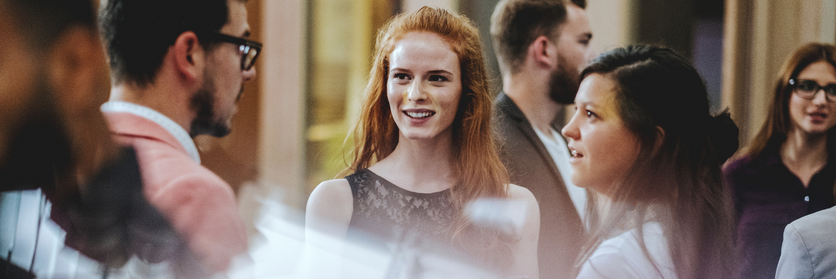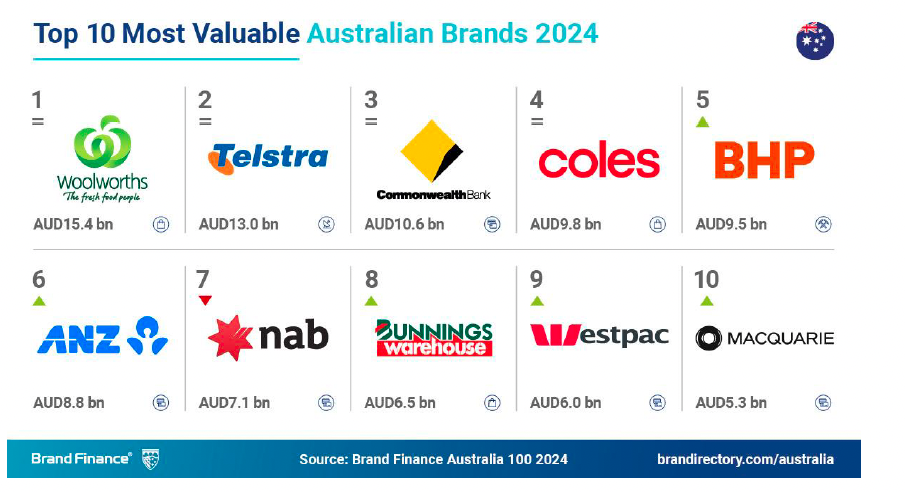Flight Centre ups Pinterest spend 10x on sharper results, attention, trends-based targeting, costs – a channel marketers are underestimating and underweighting?

What you need to know:
- Flight Centre has gone from awareness-only paid advertising to full-funnel campaigns on Pinterest after seeing “very competitive” ROAS, CPM and CPC costs.
- For the brand’s retail lead, Rachael Green, the pin-based platform isn’t like the other social platforms out there today, however you might wish to lump them together. In this view she’s joined by Hello Social head of data and analytics, Daniel Hill. Both claim Pinterest is distinct due to the way consumers attention is exhibited as they search for content and inspiration through the platform, versus looking to be entertained via TikTok, Facebook or Instagram.
- As Green puts it: “We compare Pinterest to other media channels and less so against social media. It feels like its own beast.”
- Pinterest is attempting to back up Green’s personal views on consumer attention nuances on its platform with data. In an attention study conducted with Dr Karen Nelson-Field launched last month, Pinterest reported having 170 per cent more total attention compared to other platforms. The report also found 7.3x more ‘Passive Attention’ than other platforms– something the platform attributes to people enjoying the experience more – as well as 1.5x slower scrolls past ads on Pinterest.
- For Green, the richness of data and retargeting capabilities Pinterest is providing us is very different: “We can look at segmentation, user behaviour and look-alike data – which of course we can with other social media as well – but then also jump on Pinterest Trends. Through these, we’ll start using certain imagery and words because we know it will resonate more with customers.”
- The next opportunity Flight Centre is exploring is capturing leads within the Pinterest platform via native forms integrated into Salesforce Marketing Cloud. API integration to identify customers Flight Centre is already talking to and retargeting through Pinterest with different messaging is also on the list.
- According to Hill, a lack of awareness, bespoke creative needs, planning and a skew to measuring social on time spent on site rather than engagement are hindering Pinterest’s broader advertising take-up by brands. But when tested in the right way, it’s performing well particularly for homewares, fashion, beauty and travel categories.
Pinterest comes 15th in the global list of social platforms for active monthly user bases, according to Statistica figures: 498 million, including 8 million Australian users. It’s one of the reasons it’s a second-tier choice on media plans, often cropping up only after other reach mechanisms have been exhausted by brands, says Hello Social head of data and analytics, Daniel Hill.
But for all that, Pinterest has been steadily building its advertising toolkit with targeted paid options that begin with awareness and work their way through to conversion outcomes. Among local brands upping advertising spend after seeing solid ROAS is Flight Centre, which is now using Pinterest for campaign-led programs across the funnel.
“We know our Pinterest strategy and what we’ve been doing has been performing really well over the last 12-18 months, which means it’s playing more of a prominent role in our campaigns,” Flight Centre retail marketing manager, Australia Rachael Green, tells Mi3. “I don’t think there’s been a campaign in the last 12 months where we haven’t had some form of Pinterest activity. It is driving really effective CPMs and CPCs.”
It was an awareness play that saw Flight Centre first turn Pinterest on as a paid media channel a few years ago, with creative encouraging consumers to start dreaming about Asia as a destination.
In the world of travel, social media exercises huge influence on inspiring people to choose their next holiday or trip – Statistica figures suggest 75 per cent of consumers rely on social for travel inspiration, while WeAreSocial found 37 per cent gain inspiration from photos and videos. Pinterest cites one billion travel-related searches and over 10 billion travel saves globally on its platform.
“We know in general Aussie travellers start planning their trips about six months out – that’s when they start to get inspired,” Green says. “In consideration of Pinterest being that visual directory for travel, it makes complete sense for us to be active across the platform.
“Our campaigns are usually between six to 10 weeks across inspiration to conversion period. We started to look at it [Pinterest] and said, we can invest in different stages of the funnel… we can use all of those data points and insights in the awareness and consideration phase to then retarget in a conversion phase as well. That’s what we’ve done as we’ve become more advanced.”
With an API integration between Pinterest and Salesforce Marketing Cloud, Flight Centre also started measuring different consumer behaviours and matching customers.
“Also, we know customers are becoming more au fait with transacting within those platforms. Consumers aren’t being turned away from being inspired and also being targeted with ads where it is relevant. That’s another big drawcard,” Green says.
In a way, we compare Pinterest to other media channels and less so against social media. It feels like its own beast. We know from our experience Pinterest is driving really efficient CPMs.
Pinterest versus social
Pinterest gets lumped into the social media bucket. But for Green it’s distinct due to the level of attention and engagement consumers exhibit compared with Insta, TikTok or Facebook.
“People are actively going to Pinterest to be inspired, whereas people go to their other social media accounts to interact with people and influencers. There tends to be lots more noise,” Green comments. “Even though we see a lot of benefit in social media, and it continues to be a really strong part of our media mix, engagement we see from Pinterest comes down to the reasons why people are there. They’re on the platform to search for holiday ideas, for their renovation, or wedding. Anecdotally, I see intent as stronger than in other social media platforms, where it becomes this scroll, scroll, scroll. With subliminal activity going on, you’re just hoping someone is picking up what you’re putting out there.”
Pinterest is attempting to back up Green’s personal views with data. In an attention study conducted with Dr Karen Nelson-Field launched last month, Pinterest reported having 170 per cent more total attention compared to other platforms. The report also found 7.3x more ‘passive attention’ than other platforms– something the platform attributes to people enjoying the experience more – as well as 1.5x slower scrolls past ads on Pinterest.
Passive attention is defined as consumers being subconsciously aware of an ad, something Nelson-Field suggests “holds untapped potential and offers an efficient way to drive business outcomes, particularly longer-term brand equity for larger brands that already have established distinctiveness”. Passive attention is reportedly more prevalent when high-quality content engages the viewer, keeping ads in the periphery. This type of attention is suitable for contexts where sustained mental effort isn’t required.
The data play
When it comes to targeting and segmentation data available to Flight Centre for paid activity, Green cites better visibility of data and algorithms from a Facebook perspective and improving options on Instagram.
“But the richness of data and retargeting capabilities Pinterest is providing us is very different,” she says. “We can look at segmentation, user behaviour and lookalike data – which of course we can with other social media as well – but then also jump on Pinterest Trends. Through these, we’ll start using certain imagery and words because we know it will resonate more with customers.”
In Flight Centre’s case, targeting means getting as granular as women over 30, looking to solo travel, who might have intent to travel to UK and Europe. It’s also doing broader campaigns looking at everyone between 25 and 55 years old. Pinterest Trends provides a regular gauge on types of context and themes trending across the Pinterest community. In the last 30 days for instance, high search volumes have been detected around nails (the human kind), winter outfits, digital wallpapers and ‘cool’ sunglasses. In its 2024 Pinterest Predicts report, ‘tropics like it’s hot’ and ‘rest stops’ were rising in popularity.
“Meta can get broad, and you can look at segmentation based on age, where people live, socio-economic factors and whatnot. Pinterest gives a sound view of customers based on what they’re engaging with in terms of those other pins,” Green says. “We can then choose to invest in awareness, consideration, conversion. Whereas how we would play that out in a social media or Meta sense is very different. It becomes very conversion-focused with a deal, or broad targeting with a general campaign message. In a way, they do become a little more disconnected.”
Measuring effectiveness
As a mass market retailer, Flight Centre engages in a wide array of paid media channels including out-of-home, radio and press, with reach and frequency remaining major priorities. With Pinterest, the brand is gauging performance on cost per click, CPM and ROAS. Here again lies a difference between how Pinterest is perceived against other social platforms.
“In a way, we compare Pinterest to other media channels and less so against social media. It feels like its own beast. We know from our experience Pinterest is driving really efficient CPMs,” Green says.
For Flight Centre’s most UK and Europe campaign, Green cites a CPM of $2.32 and a cost per click of $1.47 with a ROAS of 139, with she says favourably compares to other platforms using CPM and CPC as performance metrics. It also makes the campaign the most successful activity so far on Pinterest – even though it was not the highest spending campaign. Seasonality helped here, though compared to other channels, “it’s very competitive,” she says.
“It also was the first instance we used the Spotlight feature [released in June 2023], overlapping with our full-funnel approach. When we dug into the reporting, we saw it helped drive incremental reach and increased the conversion rate. Users who had been exposed to the Spotlight and targeted during the conversion layer saw the highest conversion rate,” she says.
Flight Centre also employs Pinterest for campaign-based activity over BAU or always-on activity, which is where the rest of social media sits.
“As a mass market retailer, our job is to make sure we’ve got deals out there across our full product range, appealing to all of our core customer segments all the time,” Green says. “Social media plays a huge role in making sure we get that reach and frequency. And it’s efficient media delivery.
“When we look at Pinterest, we tend to work in a more campaign-led capacity – specific audiences we’re going after, a ring-fenced objective or focus. It might be a family campaign, or it might be Asia. We still want frequency, but rather than going broad, Pinterest allows us to either go heavy in awareness but start to refine throughout the funnel.”
Year-on-year, Flight Centre has increased spend by over 1,000 per cent with Pinterest, and seen a 578 per cent increase in share of voice. “That means we’re likely pulling back on some of the other channels that might not be delivering as efficient CPMs and CPCs,” Green adds.
Next cabs off the rank
The next opportunity Flight Centre is exploring in Q1 is capturing leads within the Pinterest platform via native forms integrated into Salesforce Marketing Cloud. As of eight months ago, Pinterest also integrates via API with Adobe Commerce and Salesforce Commerce clouds.
API integration to identify customers Flight Centre is already talking to and retargeting through Pinterest with different messaging is also on the list. “We could say we want to exclude these customers because we know that they’ve booked to UK and Europe and want to avoid media wastage and start talking to people who we know are genuinely new leads,” Green says. “How we utilise that data to more effectively target customers and drive incremental is a real opportunity.
“As marketers, we’re all very aware of the changes to cookies and how we need to more effectively harness those data integrations we have with partners to effectively target customers. That’s part of our evolution – harnessing that data connection we have to strengthen effectiveness.”
Part of it is also perceptions of the time spent on these platforms. A lot of planning tools say yes, you can reach consumers on that platform [Pinterest], but the actual time they're spending on TikTok or Instagram is way higher. People use that in their planning, rightly or wrongly. If your focus is just on incremental reach, it's wrong. That's probably swaying a lot of people as well.
Different skews on social engagement
Hello Social head of data and analytics Daniel Hill, is another who believes Pinterest is operating on a fundamentally different level to other social platforms.
“With the TikToks of the world, people go there for entertainment. If you look at Facebook or Instagram, it’s either entertainment or connection across communities. Whereas with Pinterest you’re generally more engaged and show higher attention because you’re going there for a specific purpose – for inspiration, shopping,” he tells Mi3. “Users are actively searching for something while in there, looking for things. That’s opposed to TikTok or an Instagram, where it’s more passive, and content is being served to you.
“Not only is the way you interact a bit different, mindsets are different. When you’re looking at TikTok, for example, it’s one-to-one content; it takes the full screen. It’s a piece of content trying to engage you. Whereas Pinterest is much more of a fire hose of content.”
This results in a higher percentage of in-market audiences generally on Pinterest, according to Hill. “You know what they’re looking for and you can tailor your content and strategy around what people are looking for on the platform,” he says.
Hello Social has a mix of clients doing both paid and organic on Pinterest and Hill highlights FMCG, homewares, beauty and fashion as typically suitable brands. Even so, Pinterest is not the first choice and remains more of an add-on to a media plan right now.
“We generally recommend brands when they have the budgets or have exhausted other channels to try and see if Pinterest works for them, and where in the funnel it works,” Hill says.
“We use it from a media planning perspective sometimes for building out incremental reach. If brands come to us with the priority of reach above all else, which for a lot of FMCG brands is where that push is, then it can be quite a good build on.
“From an ROI perspective for a lot of people, Pinterest is something they test and learn in a small way and if it works, it gets pushed up in priorities. But from a media planning perspective, it generally isn’t the first channel that gets tested.”
In terms of truly understanding the impact Pinterest has in the media mix, Hill advises measuring back to brand and sales uplift studies, mix modelling and reading media holistically. In this vein, he welcomes Pinterest’s efforts to bring an attention lens to performance – with a caveat.
“Audiences all have different ways of consuming social content,” Hill says. “It’s a discussion we have with clients, particularly when we’re looking at creative performance and which channels has actually captured people and if people have paid attention. We’re not overly reliant on it from a planning perspective, though, because at the end of the day, we’re more worried about what the output is, not how we got there. If we measure and do a test that says this ROI was fantastic and it drove brand uplift, I don’t care if we did that through lots of cheap placements or whether they were high quality ones. If we can prove to the clients we made a tangible business result, they’re going to want to reinvest.”
What’s potentially inhibiting Pinterest advertising take-up is that social platforms have been pushing up minimum spends on brand lift studies and other things, Hill says.
“It’s probably limiting a lot of brands in what they can measure,” he admits. “Whenever these platforms – Pinterest or otherwise – are providing measurement solutions for affordable rates, that’s generally where we see the most commitment from brands.”
For Hill, other factors involved in taking up Pinterest ad spend include perceptions of audience and users, awareness of its ad toolkit, creative product limitations, and knowing how to use channels to their best ability.
“Pinterest is a different creative approach. When people are having to spend time and money on building out a strategy and new creative, that is a stumbling block,” he admits. “Quite often, the creative we use on Pinterest can be quite bespoke, as that’s where we see the most performance. It’s a similar problem Snapchat and Reddit have – all of them have quite a high indexing for those audiences people don’t utilise.
“Part of it is also perceptions of the time spent on these platforms. A lot of planning tools say yes, you can reach consumers on that platform, but the actual time they’re spending on TikTok or Instagram is way higher. People use that in their planning, rightly or wrongly. If your focus is just on incremental reach, it’s wrong. That’s probably swaying a lot of people as well.”





